QuestionI have been working at petsmart for the past 2 years and i know almost everything there is to know about the fish we carry, BUT my fish are sick i have a ten gallon fish tank and i have while they are still alive 1 neon tetra 3 rasborias-(cant spell)one sword tail and 3 molly and one striped rapheal he has these yellowish whilte dots all over him and even one his eyes. i thought they were ick and i treated it with mardel this blue stuff but it didnt work my tank is cloudy and its been set up for a month. What should i do ..another water change.. or what medacine.....all my fish are dieing off i did have to many fish in the tank ...help
AnswerHi Allison;
You need to make some 25% water changes. This is from "New Tank Syndrome". The fish are being poisoned by toxins as part of that process. As you know, there are way too many fish in this tank, especially for it being so new. This will make the toxins higher than they should be and they can easily kill the fish. To hopefully save the rest of these guys, make a 25% water change every day until it is 6 to 8 weeks old and no nitrites or ammonia are present.
Also keep in mind that your Raphael Cat will eat those smaller types of fish as he gets bigger. He will get up to about 7". (Yikes!) They're cool though, and I have one too. He comes out at nite mostly. I hope yours makes it! He may have a stubborn case of ich that is related to the toxins in the water too. Add 1/2 teaspoon of salt per gallon to help all of them get through it. Every water change, add 1/2 teaspoon for every gallon of water replaced. This will help their slime coating increase and help them absorb oxygen more readily too. Nitrite is probably elevated in there right now as part of New Tank Syndrome. Nitrite changes their blood chemistry and the salt combats this effect somewhat so they don't suffocate. It is also helpful to add an airstone for extra oxygen.
Here is my article on New Tanks to help you through it;
**********
New Tank Syndrome or Break-in Period
So you have a new tank and you filled it up, put the filter together, mounted the heater into place and turned on the lights. You have all the plants and decorations where you want them....
You are ready for fish.
But, your filter is not ready for a full tank of fish yet.
The filter is running and moving the water and cleaning out crud, right? Of course!
But a very important part of your filter is the part you can't see. An aquarium filter removes the larger visible stuff, but it also must remove the dissolved fish waste that turns into ammonia in the water. To do this, special bacteria must grow in the filter system and on the particles of gravel in the bottom of your tank. This process occurs even on a limited scale in little fish bowls that have no filter in them.
This is "New-Tank Syndrome" or the "Break-in Period". The entire process takes 6 to 8 weeks to complete because these "nitrifying" bacteria grow quite slowly.
Start off with only two hardy fish for every ten gallons of water and don't add more until the 6 to 8 weeks has gone by. Hard to be patient, but it is worth it to keep your fish alive and healthy. As a matter of fact, the bacteria cannot develop without fish in the tank. You can let that tank sit forever without fish in it, but as soon as the first fish goes in the process begins. Avoid changing the filter pads during break-in. This removes the bacterial colonies that are essential to a balanced aquarium. You can rinse the filter pad out in a container of aquarium water. This will preserve most of the bacteria colonies while still allowing your filter to flow freely. Even using bacteria additives and water conditioners when you first set up the tank will not make a tank cycle by itself. If there are no fish to provide food (fish waste) for the bacteria, the beneficial bacteria cultures will die and you will have to start the colonies all over again once fish are added to the tank.
Feed your new fish VERY lightly. Any excess food will cause additional waste your system cannot afford to have right now. If you see food floating around or lying on the plants and gravel after five minutes, too much food is going into the tank. Cut back a little each time you feed until it is ALL gone 5 minutes after you feed them.
During this "break-in period" your tank will become cloudy and milky looking. You may have to tolerate this for the entire break-in period but it is only temporary. Changing 25% of the water three times a week until the break-in period is over helps a great deal. Changing water reduces the ammonia and nitrites that rise while the bacteria continues to multiply. If ammonia and/or nitrites become too high, your fish will become stressed and possibly die. Use a good water conditioner when you replace the water and make sure it is the right temperature to avoid shocking your fish.
When the break-in is over after 6 to 8 weeks and there are no nitrites or ammonia present in the water you can slowly add more fish. Add one or two every week until you reach the desired population. This allows the bacteria to adjust to the new population every time before adding more. Monitor the nitrites and ammonia to be sure they don't come up. If they do, make a 25% water change and check them again. Don't add the next fish until the levels are down again.
The safe maximum population for any size tank is one inch of adult fish for every gallon of water in the tank. Do some research to be sure of the fish you are interested in. Even though they are small when you buy them, you have to base your population calculations on full-sized adult fish. Many hobbyists have up to two inches per gallon but this can be risky. If a water quality issue arises or a disease occurs it will spread fast and furious in an over-populated tank. In any case, 25% water changes every week to two weeks are absolutely essential for the health of your fish.
Following these guidelines will help you get your new tank on the right track.
**********
Followups welcome
At Your Service;
Chris Robbins
Come on over and join us on the freshwater fish forum at About.com to get even more information too;
http://freshaquarium.about.com/od/questionsanswers/a/naavigateforum.htm
My member name is ChrisR62. See You There!

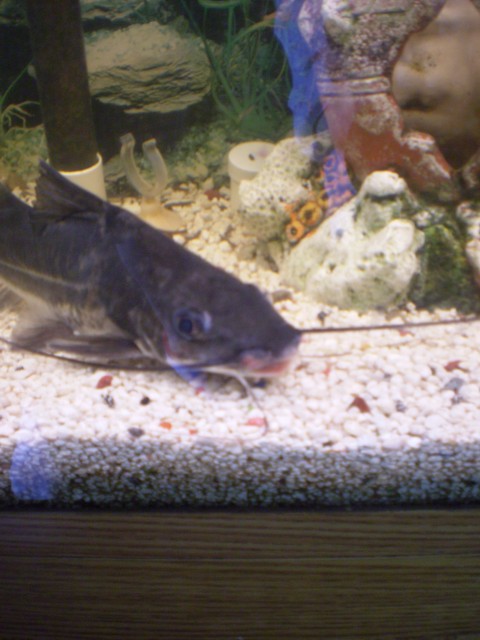 feeler rot / air gulping
QuestionRamona
QUESTION: Hi, I submitted this sa
feeler rot / air gulping
QuestionRamona
QUESTION: Hi, I submitted this sa
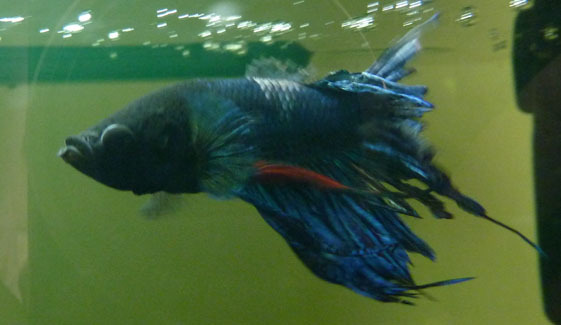 Fin rot and more...
QuestionQUESTION: Ive asked a lot of stores and some fo
Fin rot and more...
QuestionQUESTION: Ive asked a lot of stores and some fo
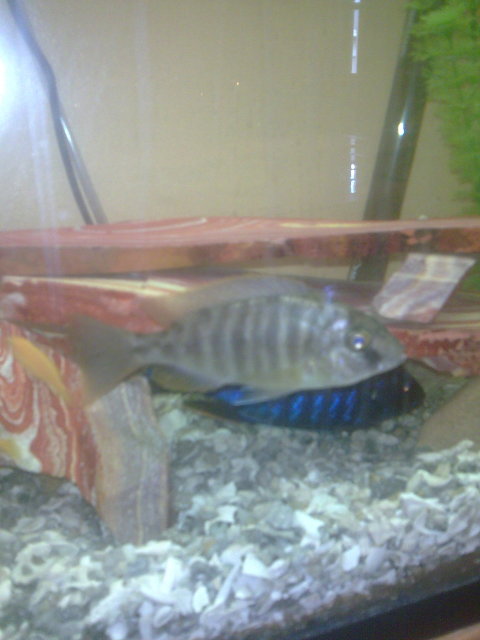 cichlids (malawi)
QuestionQUESTION: Is there a way to tell the difference
cichlids (malawi)
QuestionQUESTION: Is there a way to tell the difference
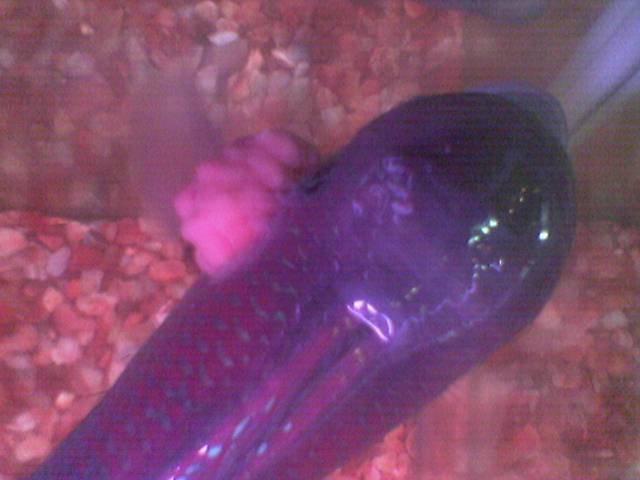 flower horn fungus
Question
flower horn fungus
Hello there,
I have a flowe
flower horn fungus
Question
flower horn fungus
Hello there,
I have a flowe
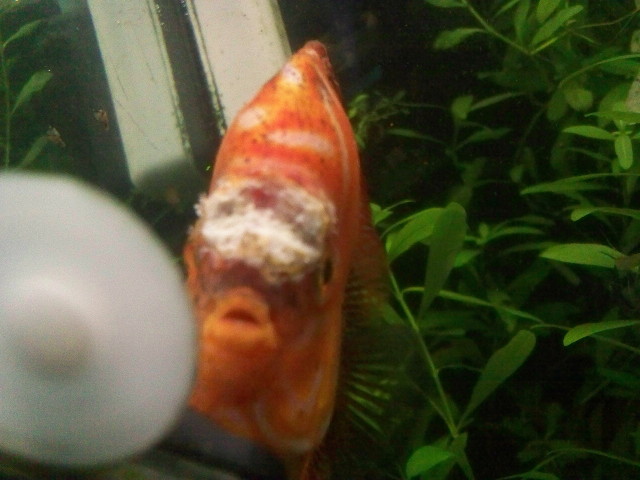 Discus Open Wound
QuestionDiscus Sore
QUESTION: Hello,
My 2 year o
Discus Open Wound
QuestionDiscus Sore
QUESTION: Hello,
My 2 year o